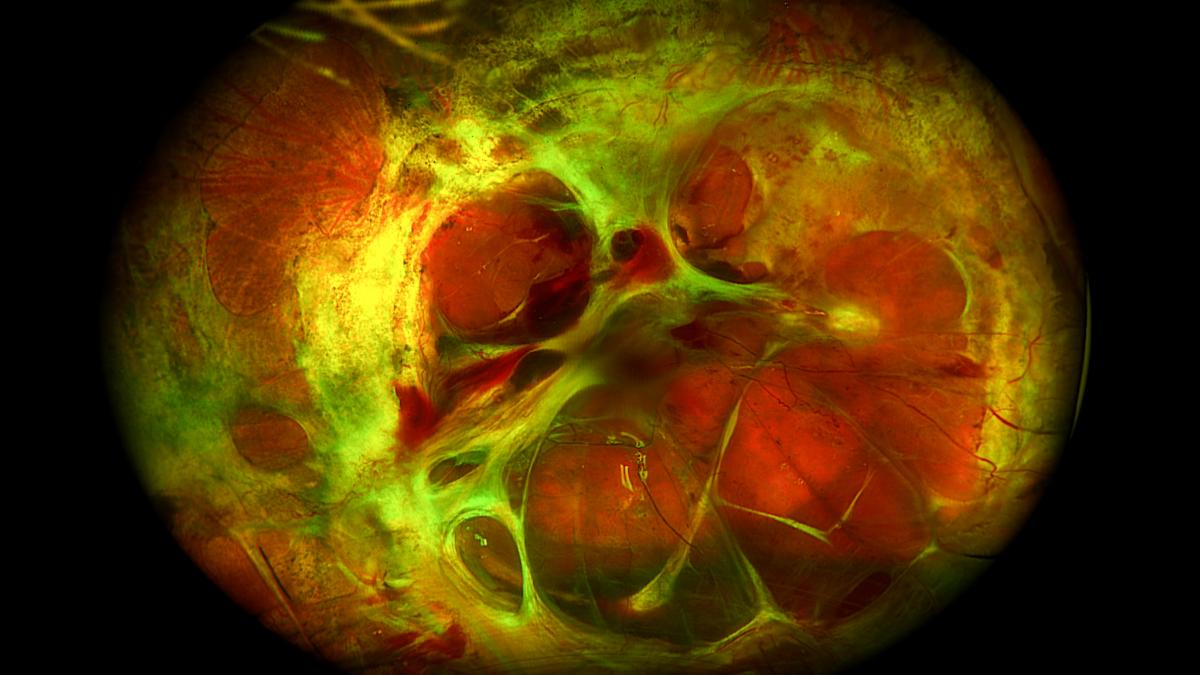Proliferative Vitreoretinopathy

PVR- What you should know at a glance
Proliferative vitreoretinopathy (PVR) remains the main cause of failure in retinal detachment surgery and a demanding challenge for our vitreoretinal surgeons.
Stats
- ~20,000+ treatable cases of PVR in the US, Europe, and Japan combined.
- Over 50% of PVR cases result in severe uncorrectable vision loss.
- PVR accounts for 75% of problems following RD surgery.
- PVR occurs in 5-10% of patients after having retinal reattachment surgery.
- PVR occurs in up to 50% of patients who have had an open globe injury.
What is PVR and why does it develop?
Proliferative vitreoretinopathy is a rare eye condition that may lead to vision loss or blindness. It typically arises following retinal detachment surgery or severe eye trauma. While retinal reattachment surgery is successful in about 90% of cases, approximately 5% to 10% of patients experience the formation of scar tissue, which can lead to the retina detaching again. This scar tissue forms within the vitreous cavity, a clear gel-like substance behind the lens and in front of the retina, causing stiffness and pulling on the retina.
PVR can also develop weeks after a serious eye injury, possibly due to the body's inflammatory response hindering proper healing and allowing the retina to remain detached. In PVR, retinal cells multiply and form scar tissue, which contracts and pulls the retina away from its position. Currently, there is no approved treatment specifically for PVR.
Where are we with treatment for PVR?
PVR has traditionally been viewed as a cytokine-induced phenomenon within the vitreous, fostering abnormal proliferation of retinal pigment epithelium (RPE) cells, culminating in clinical PVR. Despite numerous molecular targets identified in clinical trials to curb this cytokine-driven cascade, no singular agent has demonstrated efficacy in treating or preventing PVR thus far.
Despite the significant improvements in surgical techniques, the pathophysiology of PVR remains incompletely understood. Presently, the sole management approach for PVR entails additional surgical procedures: vitrectomy or scleral buckling, potentially also paired with retinal amputation and laser application.
The chance of PVR and redetachment
In approximately 90% of cases, retinal detachments are successfully treated with initial vitrectomy or scleral buckle/vitrectomy surgery. Smaller breaks in the retina tend to yield higher success rates. Nevertheless, it's important to counsel patients about a 1 in 10 chance of treatment failure due to scar tissue that interrupts normal healing following surgery. Patients exhibiting high-risk features face a higher possibility of PVR development.
Risk factors for PVR
Several patient-related factors can heighten the risk of PVR and recurrent retinal detachment, including: large or multiple retinal tears, vitreous hemorrhage, choroidal detachment, hypotony, uveitis, past ocular trauma, prior surgical procedures, and smoking. Additionally, patients with a prolonged history of RD or enduring vision impairment may face an elevated PVR risk, typically developing within 4 to 6 weeks.

